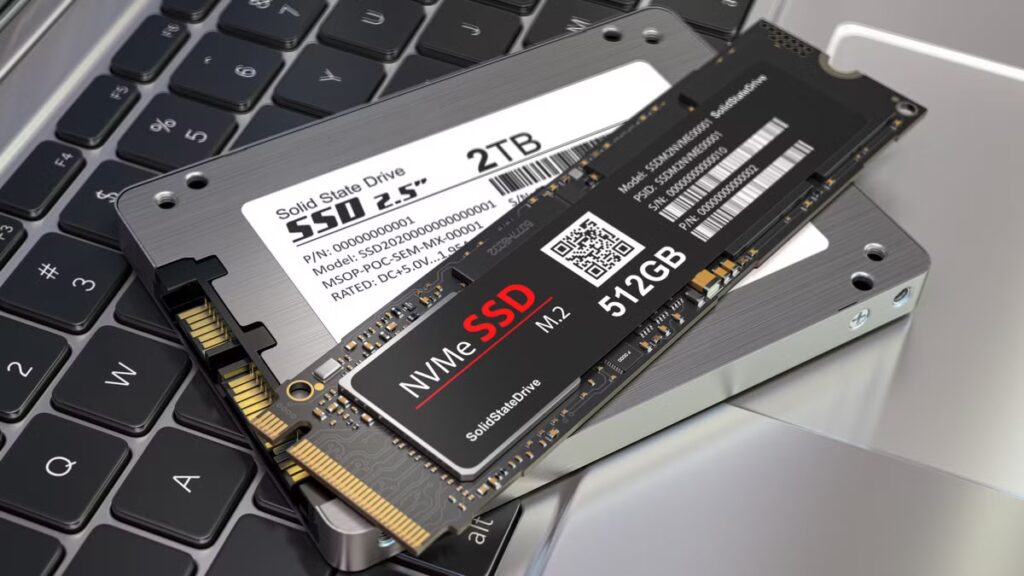The digital world is experiencing an unprecedented data explosion, with global storage demands increasing exponentially. From cloud services to AI-driven applications, businesses and individuals alike require faster, more efficient, and higher-capacity storage solutions. The latest breakthroughs in storage technology—from atomic-level data encoding to next-generation SSDs—are set to redefine the way we store and manage information.
This article explores some of the most exciting emerging storage technologies and their potential impact on the future.
A Trillion Bits in a Speck of Crystal: The Rise of Atomic Storage
One of the most revolutionary advancements in storage technology comes from atomic storage, where data is stored at the smallest possible level—individual atoms. Researchers have discovered that by manipulating atomic vacancies in crystals, they can create ultra-high-density memory. This method enables the storage of a trillion bits of data in a single crystal speck, a breakthrough that could make today’s SSDs and HDDs seem obsolete.
How Does Atomic Storage Work?
Traditional storage relies on magnetic or electronic states to encode data, but atomic storage uses physical vacancies—tiny gaps in a material’s atomic structure—to represent binary data. Since this technique requires minimal space and has no moving parts, it offers several advantages:
• Higher Data Density – Trillions of bits can be stored in microscopic structures.
• Lower Power Consumption – Less energy is required to read and write data.
• Greater Durability – Atomic storage does not degrade as quickly as traditional media.
While still in the early stages, this nanotechnology-based storage could revolutionize industries reliant on massive data processing, such as AI, scientific research, and cloud computing.
PCIe 5.0 SSDs: Ushering in a New Era of Speed
The latest PCIe 5.0 SSDs deliver read and write speeds exceeding 14,000 MB/s, doubling the bandwidth of PCIe 4.0 SSDs. This performance leap makes them ideal for gaming, AI workloads, and data-intensive tasks.
Key Benefits of PCIe 5.0 SSDs:
Faster Read/Write Speeds – Nearly twice as fast as PCIe 4.0 SSDs, significantly reducing load times.
Advanced Cooling Solutions – Increased power requirements and heat generation have led to the integration of heatsinks and liquid cooling in SSD designs.
Improved Power Efficiency – Enhanced energy efficiency ensures longer battery life in laptops while maintaining high performance.
These SSDs are particularly beneficial for industries such as video production, game development, AI training, and scientific computing, where large datasets need to be processed quickly.
Flash Storage Optimization: The Shift Towards Smart SSDs
As traditional hard disk drives (HDDs) are gradually replaced, modern storage solutions are shifting toward more intelligent SSD architectures.
1. Zoned Namespace SSDs (ZNS):
Traditional SSDs handle data in random write patterns, which leads to inefficiencies and shortens the SSD’s lifespan.
Zoned Namespace SSDs organize data into logical zones, reducing unnecessary data movement and improving performance, endurance, and energy efficiency.
2. Computational Storage:
AI-driven storage processing allows SSDs to handle data compression, encryption, and real-time analysis directly within the drive, reducing CPU workload.
This results in faster response times and lower power consumption, which is crucial for edge computing, AI, and cloud applications.
Both of these technologies aim to extend SSD longevity, making them more reliable for long-term data storage in enterprise and consumer applications.
AI and Cloud Storage: The Future of Data Management
With the rapid expansion of machine learning, big data, and IoT, storage solutions need to be smarter, more scalable, and capable of handling immense workloads.
AI-driven storage management is being integrated into data centers to predict storage needs, automate file organization, and enhance security.
Cloud storage providers are improving real-time data processing by leveraging AI for better indexing and search functionality.
Hybrid cloud solutions are becoming more popular, offering the flexibility of local storage speed with cloud backup reliability.
With AI-driven automation and real-time data analytics, modern storage systems will become more efficient and self-optimizing, reducing the need for constant manual management.
What’s Next? The Road Ahead for Data Storage
While atomic storage and AI-powered SSDs represent exciting advancements, the future of storage could bring even more radical innovations:
DNA Storage Scientists are working on encoding data into synthetic DNA molecules, potentially storing petabytes of data in a single gram of DNA.
Ultra-Efficient Energy Storage – Future SSDs could store and process data using minimal power, making them ideal for space exploration and off-grid applications.
Quantum Storage – Quantum computing breakthroughs could lead to storage systems that use qubits instead of traditional bits, exponentially increasing storage capacity.
Final Thoughts
The storage industry is undergoing a rapid transformation, with groundbreaking technologies pushing the limits of capacity, speed, and efficiency. Whether it is atomic-level storage, ultra-fast PCIe 5.0 SSDs, or AI-driven data management, these innovations will shape the way we store and access information for decades to come.
At TechZoneNews.al, we are committed to bringing you the latest news on emerging technology trends. Stay tuned for more updates on the future of data storage.




